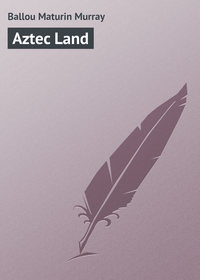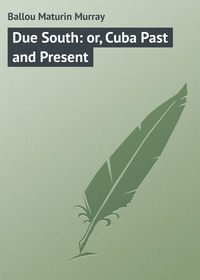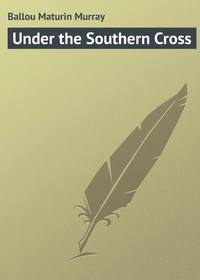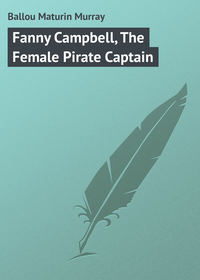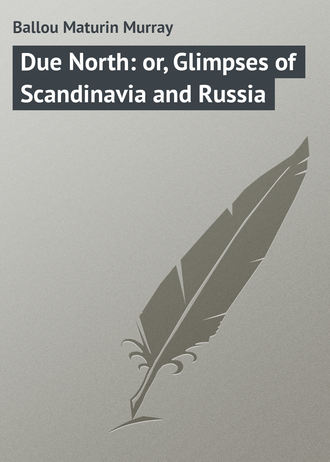 полная версия
полная версияDue North: or, Glimpses of Scandinavia and Russia
There is here also a system in operation designed to supply workingmen and persons of humble means with permanent dwelling-houses, – with homes which they may own. Comfortable brick houses are erected with all reasonable accommodations, and a title is made out to the would-be owner, he paying for the same by a small monthly instalment, until finally he owns the establishment. This being a philanthropic object, no profit above actual cost is designed to be realized by the promoters. The moral effect of the plan is excellent, leading to a sense of responsibility and economy among a class which is only too prone to expend its earnings for drink, or to fritter them away without realizing an equivalent.
It was found that the people in their domestic establishments had an odd way of prefacing their family meals; namely, partaking of raw salted salmon, smoked herring, chipped beef, and pickles of various kinds, which they washed down with one or two wine-glasses of strong spirit. It seemed to be an obvious inconsistency of purpose. This ceremony takes place at a side-table just before sitting down to the regular meal, be it breakfast, luncheon, or dinner. This custom was noticed afterwards at various places in Scandinavia as well as in Russia, the practice in the latter country being universal in hotels and private houses; but it seemed obvious to us that it was only an excuse for dram-drinking as an appetizer. Bad habits are easily acquired, and soon make slaves of their incautious victims. More than one person admitted to us in Russia that without this preliminary tipple, dinner to them would have no relish.
CHAPTER IV
Capital of Norway. – A Grand Fjord. – A Free and Independent State. – The Legal Code. – Royal Palace and Gardens. – Oscar's Hall. – The University. – Public Amusements. – The Ice Trade. – Ancient Viking Ships. – Heathen Tombs. – An Interesting Hostelry. – A Steam Kitchen. – Environs of Christiania. – Horses and their Treatment. – Harvest Time. – Women's Work. – The Sæter. – A Remarkable Lake. – Wild Birds. – Inland Travel. – Scandinavian Wild Flowers. – Lonely Habitations. – A Land of Alpine HeightsIn approaching the capital of Norway by sea from Gottenburg, the Christiania fjord is ascended for a distance of seventy miles to its head, bordered on either side nearly the whole way by finely-wooded hills, and its surface dotted by emerald isles reflected in the deep mirror-like waters. It must be understood that a fjord is not a sound, nor is it a thoroughfare in the full sense of that word; it is a cul de sac. This of Christiania at its débouchure is just fifteen miles in width, and like many other Norwegian fjords is much deeper than the sea beyond its mouth. The entrance is marked by a powerful and lofty lighthouse on the island of Færder. The ancient citadel of Akershus, built upon a bold and rocky promontory some six hundred years ago, commands the approach to the city. In this curious old fortification are kept the regalia and national records, the tree-adorned ramparts serving as a pleasant promenade for the public. One is often reminded while sailing upon Norwegian fjords of the Swiss lake-scenery. This leading to the capital is not unlike Lake Geneva in the vicinity of Vevay and Chillon, except that it is bolder in its immediate shores and is also broader and deeper than Lake Leman. The city, which is built upon a gradual slope facing the south, is seen to good advantage from the harbor. No more appropriate spot could have been selected for the national capital by Christian IV., who founded it, and after whom it is named, than the head of this beautiful elongated bay. An ancient town named Oslo occupied the site in the middle of the eleventh century. It is the seat of the Storthing, or Parliament; and the King, whose permanent residence is at Stockholm, is expected to reside here, attended by the court, at least three months of the year. With its immediate suburbs, the population of the city is a hundred and twenty-five thousand. It should be remembered that Norway is a free and independent State, though it is under the crown of Sweden, and that the people are thoroughly democratic, having abolished all titles of nobility by enactment of the Storthing (Great Court) so early as 1821, at which time a law was also passed forbidding the King to create a new nobility. Nevertheless, the thought occurs to us here that these Northmen, who overran and conquered the British Isles, founded the very nobility there which is the present boast and pride of England. We find some problems solved in Norway which have created political strife elsewhere. Though its Church is identical with the State, unlimited toleration exists. There is also a perfect system of political representation, and while justice is open to one and all, litigation is sedulously discouraged. The meetings of the Storthing are quite independent of the King, not even requiring a writ of assemblage from him. Thus it will be seen that though nominally under despotic rule, Norway is really self-governed.
The legal code of Norway is well worthy of study, both on account of its antiquity and its admirable provisions. The old sea-kings, or free-booters as we have been accustomed to consider them, had a more advanced and civilized code than any of the people whose shores they devastated. Before the year 885 the power of the law was established over all persons of all ranks, while in the other countries of Europe the independent jurisdiction of the feudal lords defied the law until centuries later. Before the eleventh century the Scandinavian law provided for equal justice to all, established a system of weights and measures, also one for the maintenance of roads and bridges, and for the protection of women and animals, – subjects which no other European code at that time embraced. These laws were collected into one code by Magnus VII. about the year 1260. They were revised by Christian IV. in 1604, and in 1687 the present system was drawn up. So simple and compact is it that the whole is contained in a pocket volume, which is in the possession of every Norwegian family. Each law occupies but a single paragraph, and all is simple and intelligible. Speaking of these early law-makers (as well as law-breakers!) Carlyle says: "In the old Sea-Kings, what an indomitable energy! Silent, with closed lips, as I fancy them, unconscious that they were specially brave; defying the wild ocean with its monsters, and all men and things; progenitors of our Blakes and Nelsons!"
The Royal Palace of Christiania is pleasantly situated on an elevated site, the highest ground in fact within the city, surrounded by an open park containing miniature lakes, canals, and groves of charming trees. The park is called the Royal Gardens, which are always open to the public. Fronting the palace is an admirable equestrian statue in bronze of the citizen King Bernadotte, who ascended the throne of Sweden under the name of Carl Johan XIV., and it bears his consistent motto: "The people's love is my reward." The palace is a large plain edifice of brick, quadrangular in shape and painted a dull ugly yellow, with a simple portico. It was erected within the last fifty years, and looks externally like a huge cotton-factory. The Queen's apartments are on the ground floor and are very beautifully furnished, especially the White Saloon, so called. Above these are the King's apartments, embracing the usual variety of state halls, audience chambers, reception rooms and the like, plainly and appropriately furnished. The palace contains some of Tidemand's best pictures. There is also a royal villa called Oscar's Hall, situated in the immediate environs on the peninsula of Ladegaardsöen, less than three miles from the city proper. It is a Gothic structure amid the woods, eighty feet above the level of the waters of the harbor which it overlooks. Oscar Hall, with its one castellated tower, is scarcely more than a shooting-box in size, though it is dignified with the name of palace. The grounds are wild and irregular, covered mostly with a fine growth of trees, mingled with which the mountain ash was conspicuous with its clusters of berries in royal scarlet. The air was full of the fragrance of the lily-of-the-valley, which lovely little flower grows here after its own sweet will in rank profusion. There are a few choice paintings in the Hall, especially some admirable panels by Tidemand representing scenes in Norwegian peasant life, and called "The Age of Man from the cradle to the grave." There are also, we feel constrained to say, some very poor pictures on the walls of Oscar's Hall. In the garden near the villa were many familiar flowers in a thrifty condition, such as lilacs, white and scarlet honeysuckles, sweet peas, yellow tiger-lilies and peonies, besides some curious specimens of cacti and a wonderfully fragrant bed of low-growing mignonette. It was singular to see flowers and fruits which with us have each their special season, here hastening into bloom and ripeness all together.
The streets of the city are quite broad, most of them running at right angles with each other. The houses are generally of brick, stuccoed, though there are some of stone, and all have the effect of stone structures. There was once a richly endowed cathedral here, where James I. of England was married to Anne of Denmark in 1589, but it was destroyed by fire, which element has completely devastated the place at different periods, so that the present aspect is one of a substantial modern character. The old wooden houses have almost entirely disappeared. The present cathedral is in the shape of a Greek cross, but it is of no special interest. Over the altar is a painting by a German artist representing our Saviour in the Garden of Gethsemane, a work of much more than ordinary merit. The inhabitants of Christiania are almost exclusively Protestants.
The University founded by Frederick VI. in 1811 is a plain but massive structure, the front ornamented with Corinthian pillars of polished red granite. It accommodates at the present writing some nine hundred students, the tuition being free to all native applicants suitably prepared; it contains also a noble library of over two hundred thousand volumes, besides many manuscripts of inestimable value. The library is freely open even to strangers under very simple restrictions. The University also contains an extensive Museum of Zoölogy and Geology, which in the departments of the bronze and iron periods excels even the admirable one at Copenhagen. Christiania has a Naval, a Military, and an Art school, a Lunatic Asylum, an Astronomical Observatory, and various charitable institutions; nor should we forget to mention its admirably conducted Botanical Garden situated about a mile from the town, containing among other interesting varieties a very finely-arranged collection of Alpine plants from Spitzbergen and Iceland. The town has its Casino, Tivoli, or whatever we please to call it; the good citizens here have named it the Klinkenberg. It is a place of out-door amusement for old and young, where grown up children ride wooden-horses and participate in childish games with apparently as much zest as the little ones. Here we found peep-shows, pistol-galleries, Russian slides, a small theatre, and cafés where were dispensed beer, music, and Swedish punch, – this last very sweet and very intoxicating! The acrobat, with his two small boys in silver-spangles and flesh-colored tights, was present and especially active, besides the conventional individual who eats tow and blows fire from his mouth. On the occasion of our visit the last named individual came to grief, and burned his nether lip severely.
The commerce of Christiania is increasing annually. Over two thousand vessels were entered at its custom house during the year 1885. There are regular lines of steamers established between here and London, Hull, Glasgow, Copenhagen, and other ports, which transact a large amount of business in the freight department, with a considerable incidental passenger trade. The harbor is frozen over at least three months of the year, though that of Hammerfest, situated a thousand miles farther north on the coast of Norway, is never closed by ice, owing to the genial influence of the Gulf Stream, – an agent so potent as to modify the temperature of the entire coast of Scandinavia on its western border. Wenham Lake Ice, which was originally and for some years shipped from Massachusetts to England, now comes direct from the Christiania fjord! An English company has long owned a lake near Dröbak, which yields them an ample supply of ice annually. The London ice-carts still bear the name of "Wenham Lake," but the ice comes from Norway. We were told that the quantity shipped for use in England increases yearly as ice grows to be more and more of a domestic necessity.
The Storthing's Hus is quite a handsome and imposing building, of original design in the Romanesque and Byzantine style, facing the Carl Johannes Square, the largest open area in the city. It was finished and occupied in 1866. The Market Place is adorned with a marble statue of Christian IV. Another fine square is the Eidsvolds Plads, planted with choice trees and carpeted with intensely bright greensward. The chief street is the Carl Johannes Gade, a broad boulevard extending from the railroad station to the King's Palace, half way between which stands the imposing structure of the University. Opposite this edifice is the Public Garden, where an out-door concert is given during the summer evenings by a military band. In a large wooden building behind the University is kept that great unrivalled curiosity, the Viking ship, a souvenir of more than nine hundred years ago. The blue clay of the district where it was exhumed in 1880, a few miles south from Christiania at Gokstad, has preserved it nearly intact. The men who built the graceful lines of this now crumbling vessel, "in some remote and dateless day," knew quite as much of the principles of marine architecture as do our modern shipwrights of to-day. This interesting relic, doubtless the oldest ship in the world, once served the Vikings, its masters, as a war-craft. It is eighty feet long by sixteen wide, and is about six feet deep from gunwale to keel. Seventy shields, spears, and other war equipments recovered with the hull show that it was designed for that number of fighting men. A curious thrill is felt by one while regarding these ancient weapons and armor, accompanied by a wish that they might speak and reveal their long-hidden story. In such vessels as this the dauntless Northmen made voyages to every country in Europe, and as is confidently believed they crossed the Atlantic, discovering North America centuries before the name of Columbus was known. Ignoring the halo of romance and chivalry which the poets have thrown about the valiant Vikings and their followers, one thing we are compelled to admit: they were superb marine architects. Ten centuries of progressive civilization have served to produce none better. Some of the arts and sciences may and do exhibit great progress in excellence, but shipbuilding is not among them. We build bigger but not better vessels. This ancient galley of oak, in the beauty of its lines, its adaptability for speed, and its general sea-worthiness, cannot be surpassed by our best naval constructors to-day. An American naval officer who chanced to be present with the author, declared that there were points about this exhumed vessel which indicated retrogression rather than progress on the part of modern builders of sea-going craft. The bent timbers on the inside are of natural growth, the sheathing boards are an inch and a half in thickness, firmly riveted, the iron bolts clinched on either end. Near the gunwales the bolts are of oak. The planking slightly overlaps, being bevelled for the purpose; that is, the hull is what we technically call clinker-built, and would probably draw about four feet of water in a sea-going trim. The bow and stern are of the same pointed shape, and rise a considerable distance above the waist, giving the vessel what sailors term a deep sheer inboard.
The burial of this ship so many centuries ago was simply in accordance with the custom of those days. When any great sea-king perished, he was enclosed in the cabin of his galley, and either sunk in the ocean or buried with his vessel and all of its war-like appointments upon the nearest suitable spot of land. In this instance, as has been intimated, weapons of war were buried with the deceased, just as our Indian tribes of western America do to this day. Tombs dating much farther back than the period when this sepulchral ship was buried have been opened in both Norway and Sweden, showing that the dead were sometimes burned and sometimes buried in coffins. The cinerary urns were usually found to have been either of terra-cotta or of bronze, – seldom, however, of the latter material. In these tombs trinkets and weapons were also discovered, with the skeletons of horses and other domestic animals. To the period of these burials belong the earliest Runic inscriptions, differing materially from those which were in use a few centuries later. One may believe much or little of the extravagant stories handed down by tradition concerning these ancient Scandinavians, but certainly we have tangible evidence in these tombs that some of the legends are literally true. We are told that when a chieftain died in battle, not only were his war-horse, his gold and silver plate, and his money placed upon his funeral pyre, but that a guard of honor from among his followers slew themselves, that he might enter the sacred halls of Odin properly attended. The more elevated the chief the larger was the number who must sacrifice themselves as his escort to the land of bliss. So infinite was the reliance of the Heathen horde in their strange faith, that, far from considering their fate to be a hard one, they adopted its extremest requirements with songs of joy!
A general aspect of good order, thrift, industry, and prosperity prevails at Christiania. The simplicity of dress and the gentle manners, especially among the female portion of the community, were marked features. No stranger can fail to notice the low, sympathetic tones in which the women always speak; but though decorous and worthy, it must be admitted that the Norwegian ladies are not handsome. The people resort to the ramparts of the old castle as a promenade, with its grateful shade of lime-trees, and they also throng the pleasant Central Park near the Royal Palace. One sees here none of the rush and fever of living which so wearies the observer in many of the southern cities of Europe, – notably in Paris, London, and Vienna. The common people evince more solidity of character with less of the frivolities, and yet without any of the frosty chill of Puritanism. They may be said to be a trifle slow and phlegmatic, but by no means stupid. The most careless schoolboy when addressed by a stranger in the street instantly removes his hat, and so remains until he has fully responded to the inquiry made of him, showing thus the instinctive politeness which seems to permeate all classes in Norway.
The long-established Hotel Victoria is an interesting hostelry and museum combined, at least so far as ornithology is concerned. Its stuffed varieties of native birds disposed in natural positions here and there about the establishment, would prove the envy of any collector in this department of natural history. The house is built about a spacious court, which is partly occupied by a broad and lofty marquee or tent, under which the table d'hôte is served. Orange-trees and tropical plants are gracefully disposed, and creeping vines give a sylvan appearance to the court. The whole area is overlooked by an open and spacious balcony, where a band of musicians during the season dispense enlivening music. Tame sparrows and other birds hop about one's feet during each meal, even alighting upon the chairs and tables to share tid-bits with the guests. The whole formed a consistent purpose well carried out, and was entirely unlike any hotel whose hospitality we have shared. There are three or four excellent public houses besides the Victoria, including the Grand Hotel and the Scandinavia, the last two quite centrally located. We made our temporary home at the Grand, a spacious and comfortable establishment.
There is an original institution of a charitable nature in the capital, called a Steam Kitchen, where food is cooked upon a large scale, and entirely by steam. This large establishment, situated on the Torv Gade, was built especially for the purpose of benefiting the industrious poor of the city. Here two or three thousand persons are daily provided with good wholesome dinners at a minimum charge, calculated to cover the actual cost. While hundreds of persons carry away food to their families, larger numbers dine at the neat tables provided in the establishment for that purpose. The inference drawn from a casual observation of the system was, that no possible benevolence of a practical character could be better conceived or more judiciously administered. It seemed to be the consummation of a great charity, robbed of all objectionable features. None appeared to feel humiliated in availing themselves of its advantages, since all the supposed cost of the provisions was charged and paid for.
Upon visiting a new city in any part of the world, the writer has learned more of its people, their national characteristics and all local matters worth knowing, by mingling with the throng, watching their every-day habits and conventionalities, observing and analyzing the stream of life pouring through its great thoroughfares, reading the expression upon human faces, and by regarding now and again chance domestic scenes, than from all the grand cathedrals, art galleries, show palaces, and guide-books combined. Years of travel fatigue one with the latter, but never with Nature in her varying moods, with the peculiarities of races, or with the manners and customs of every-day life as characterizing each new locality and country. The delight in natural objects grows by experience in every cultivated and receptive mind. The rugged architecture of lofty mountains, tumbling waterfalls, noble rivers, glowing sunsets, broad land and sea views, each has a special, never-tiring, and impressive individuality. While enjoying a bird's-eye view of Christiania from the height of Egeberg, a well-wooded hill four hundred feet in height in the southern suburb, it was difficult to believe one's self in Icelandic Scandinavia, – the precise latitude of the Shetland Islands. A drowsy hum like the drone of bees seemed to float up from the busy city below. The beautiful fjord with its graceful promontories, its picturesque and leafy isles, might be Lake Maggiore or Como, so placid and calm is its pale-blue surface. Turning the eyes inland, one sees clustered in lovely combination fields of ripening grain, gardens, lawns, cottages, and handsome villas, like a scene upon the sunny shores of the Mediterranean near the foot-hills of the Maritime Alps. An abundance of deciduous trees enliven the scene, – plane, sycamore, ash, and elm in luxuriant foliage. Warmer skies during the summer period are not to be found in Italy, nor elsewhere outside of Egypt. As we stood upon the height of Egeberg that delicious sunny afternoon, there hung over and about the Norwegian capital a soft golden haze such as lingers in August above the Venetian lagoons.
The houses in the vicinity of Christiania are generally surrounded by well-cultivated gardens embellished with choice fruit and ornamental trees. An unmistakable aspect of refinement was obvious about these homesteads, and one would fain have known somewhat of the residents of such attractive domiciles. The traveller who passes so few days in each new city, and those occupied mostly in observations of a different character, can hardly pretend to express an opinion of the resident social life and domestic associations; but we were credibly informed that there was no dearth of circles composed of intelligent, polished, and wealthy individuals in Bergen, Gottenburg, or Christiania. Evidences of the truth of this are certainly obvious to the most casual observer. Here, and afterwards still farther north, a tree new to us was found, called the Hägg (Prunus Padus), so abundantly clothed in snow-white blossoms as to entirely hide its leaves of green. It generally stood in the yards of dwelling-houses as a floral ornament, and reminded one of a New England apple-tree in full bloom. The blossoms emitted very little decided perfume, but the luxuriant growth and the pure white flower were very beautiful. A dainty bit of color now and again, caused by the single-leafed dog-rose, recalled the inland roads of far-off Massachusetts, where mingled blackberry and raspberry bushes and wild roses so often line the quiet paths. The immediate environs of the capital are characterized by fine picturesque elevations, the land rising gradually on all sides until it becomes quite Alpine. The forest road leading towards Rynkan Falls was fragrant with the soft, soothing odor of pines and firs, mingled with that of blue, pink, and yellow flowers, blossoms whose local names only served to puzzle us, – "wee, modest, crimson-tipped flowers." The giant larkspur, lilies-of-the-valley, and some orchids were familiar, and greeted the senses like old friends. The juniper bushes were luxuriant, and there were plenty of bilberries and wild strawberries in bloom. These last berries when ripe, as we afterwards found them farther north, are a revelation to the palate, being quite small, but of exquisite flavor, recalling the tiny wood-strawberries of New England, which were of such exquisite flavor and dainty aroma before we cultivated them into monstrosities. The summer is so short here as to give the fruits and flowers barely time to blossom, ripen, and fade, or the husbandman a chance to gather his harvest. Vegetation is wonderfully rapid in its growth, the sunshine being so nearly constant during the ten weeks which intervene between seed-time and harvest. Barley grows here two and a half inches and peas three inches in twenty-four hours, for several consecutive days. It is an interesting fact that if the barley-seed be brought from a warmer climate it requires to become acclimated, and does not yield a good crop until after two or three seasons. The flowers of the torrid and temperate zones as a rule close their eye-lids like human beings, and sleep a third or half of the twenty-four hours; but in Arctic regions life to these lovely children of Nature is one long sunny period, and sleep comes only with death and decay. It was also observed that the flowers here assume more vivid colors and emit more fragrance during their brief lives than in the south. The long delightful period of twilight during the summer season is seen here in all its perfection, full of suggestiveness and roseate loveliness, which no pen can satisfactorily describe. There is no dew to be encountered and avoided, no dampness. All is crystal clearness and transparency, "gilding pale streams with heavenly alchemy."



